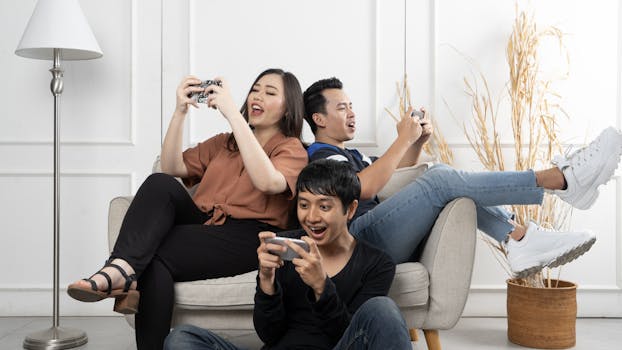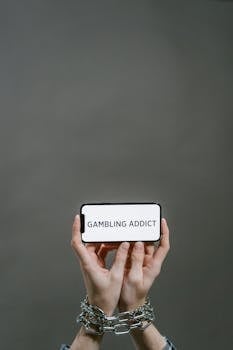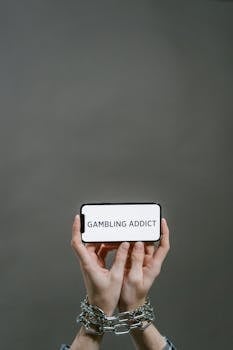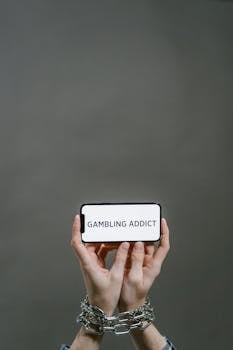Deportes electrónicos
The Best Equipment for eSports Players and Competitors: Gear That Delivers Results
Discover which esports equipment helps players and competitors win. Boost your setup for comfort, accuracy, and team play in both PC and mobile gaming with gear advice and pro-level tips.
Anuncios
Landing the right gear can turn a tough match into your best performance. Finding the right balance of comfort, performance, and reliability in esports equipment creates an advantage you’ll feel with every move.
Competitive gaming has evolved from casual spare-time matches into a fierce scene where esports equipment can swing the odds. Tiny details—such as monitor refresh rates or button actuation—change both playstyle and outcome.
This article breaks down essentials, tips, and actionable choices for esports players. If you play games on PC or mobile and aim to compete, dive in to discover equipment upgrades and play by play advice.
Gear Choices That Set You Up for Consistent Wins
The first choice in esports equipment lays the groundwork for every control, strategy, and reaction in your sessions. Each upgrade or swap has visible payoff and, with the right process, you’ll find gear that matches your needs.
Players who take esports equipment seriously notice improvements in reaction time, comfort, and focus. Fine-tuning your loadout is practical—settle for nothing less than repeatable precision and reliable consistency.
Identifying Essential PC and Console Accessories
When starting a search for esports equipment, top priorities include a responsive keyboard, quick mouse, quality headset, and game-specific controller. Each piece answers a common player’s need for competitiveness and comfort.
For FPS titles, consider mice with adjustable DPI and mice with programmable buttons for fast weapons switches. Racing or fighting game fans typically stick to custom controllers or dedicated steering rigs for tighter, more exact input.
Mechanical keyboards with tactical feedback offer a satisfying keystroke and eliminate question marks over whether a key has actuated. Aim for N-key rollover and anti-ghosting to handle lightning-fast inputs with no dropouts.
Optimizing Your Gaming Monitor and Visuals
Monitors aren’t just screens; they’re the lens for every competitive play. Choose esports equipment with rapid refresh rates (144 Hz to 240 Hz) to see movements sooner and adapt faster.
IPS panels show true colors for strategy or RPG games, while fast TN panels minimize ghosting for shooters. Prioritize low input lag and try to set up G-Sync or FreeSync for smoother gameplay without tearing or stutter.
At events, players often swap to gear that matches tournament specs: a 24-inch 1080p screen to avoid retraining muscle memory. Get familiar at home by practicing on gear similar to what pros use live.
| Equipment | Key Feature | Best for Players Who | Actionable Tip |
|---|---|---|---|
| Mechanical Keyboard | Fast response, N-key rollover | Need rapid input with feedback | Test if your model supports anti-ghosting with multi-key combos |
| Gaming Mouse | Customizable DPI, lightweight | Compete in FPS or MOBA games | Set DPI to match your favorite pro’s settings for aim practice |
| High-Refresh Monitor | 144Hz+, low input lag | Play shooters or rhythm games | Enable game mode and turn off post-processing for clear visuals |
| Headset with Mic | Virtual surround, comfort fit | Communicate in fast-paced team games | Adjust EQ for voice clarity before your next match |
| Custom Controller | Remappable buttons, paddles | Racing and fighting game pros | Set up both trigger stops and remaps for your preferred combos |
Fine-Tuning Audio and Communication for Team Performance
High-grade audio as part of your esports equipment improves every game’s clarity, sound cue detection, and teamwork. Even mobile gamers benefit from noise isolation and a clear microphone in busy settings.
Start with smooth playback—wired headsets and crisp mics let you call out plays cleanly, while wireless lag or static can cause missed steps or lost rounds in tournaments.
Clear Callouts with Dedicated Microphones
Solo players in competitive ladders might get by with a simple headset. But if you’re coordinating in scrims, an external microphone transforms voice output into sharp, intelligible commands.
Position microphones close to your mouth, angle them away from breath, and set up push-to-talk controls to avoid background noise. This simple shift gets your callouts heard above the game and any crowd noise.
- Switch to a dedicated gaming microphone for crisp voice quality—background noise is minimized and you’ll hear fewer requests to repeat yourself mid-fight.
- Set up pop filters and boom arms, preventing pops or vibration distractions during tense moments in play. This is a noticeable step up, especially for streamers.
- Test your audio setup before every game, just like you would a warmup drill, so volume and EQ are dialed in for the main event.
- Practice listening for grenade pings or enemy footfalls on quality headphones, not just relying on visuals. This fast-feedback habit converts cues into faster in-game reaction.
- Record short audio clips during practice—catch and fix clarity or background noise issues early, replicating tournament communication standards in your home routine.
Tuning audio with good esports equipment can make a difference when every second and syllable counts.
Adapting Audio for Mobile Competitive Gaming
Mobile gamers run into noisy environments and unpredictable setups. Swap in noise-cancelling earbuds or over-ear wireless headphones for consistent bass and less distraction in lobbies or airports when traveling to events.
Look for esports equipment with reliable Bluetooth connectivity and long battery life. Avoid dropouts or audio lag, which can break focus and cost you the upper hand in close-quarters showdowns.
- Switch to a low-latency wireless headset to bypass cable snags and give freedom to move—especially in mobile MOBA tournaments or when practicing on the go.
- Store a backup pair of wired buds in your tournament bag, so if batteries die or interference strikes, you’ll always have a fail-safe setup for finals.
- Use customizable EQ apps to tailor bass, mids, and highs for your preferred game—helping you distinguish footsteps or skill charge sounds in fast matches.
- Keep microphone sensitivity low to block out crowd noise at events—this makes sure your team hears only your voice in a clutch moment.
- Check your peripherals are fully charged and updated before every match so you’re never caught off guard by unexpected technical issues.
Dialing in mobile audio ensures sharp reactions and clear commands no matter your environment.
Choosing Peripherals to Match Your Preferred Game Genre
The right esports equipment in each genre feels like a custom fit. Players find higher accuracy, speed, or endurance once they match gear to the needs of their main game.
FPS and MOBA Gamers: Precision Tools for Performance
Competitive titles like Valorant or League of Legends push gear to its limits. The sweet spot for many is a featherweight mouse, tactile keyboard, and simple, distraction-free monitor setup.
“I noticed fewer missed shots since reducing mouse weight,” said one player while adjusting their esports equipment. “A matte mousepad and quiet switches cut out slip-ups in late-game fights.”
Breathe deeply and rehearse transitions—e.g., from movement to skillshot—in live scenarios before scrims. This habit lets muscle memory adapt to gear changes seamlessly.
Racing Sims, Fighters, and Mobile Players: Specialized Input Devices
Racing rigs and fight sticks make character response immediate. “My lap times dropped after mapping pedals and paddles to my hand’s natural motion,” one eRacing competitor shared.
Mobile esports players lean on high-refresh screens and ergonomic controller grips. Short practice intervals help avoid wrist fatigue on touchscreens, especially with sustained play or travel.
Before a tournament, simulate the pressure of the event using your gear: launch a timed practice round with event-ready settings, then review performance for tweaks before qualifiers.
Ergonomics and Comfort: Critical for Long Hours of Play
Extended gaming sessions test not only skill, but also your physical endurance. Investing in ergonomic esports equipment—like adjustable chairs and well-placed peripherals—means more stamina and fewer injuries or cramps.
Players report that swapping to padded, wrist-supporting mousepads reduces strain. Height-adjustable desks let you reposition for stand-up play, which sustains alertness during back-to-back matches or late-night scrim blocks.
Setting Up Your Gaming Space for Health and Consistency
“Feet flat, elbows at 90 degrees”—you’ve likely heard this positioning advice. Set up every element of your station before the grind begins, mirroring the event venue as closely as possible for muscle memory benefit.
Cable management clears mental clutter and gives more desk space to move gear quickly. Tape down cords or invest in cable trays to prevent mid-match distractions.
Small details add up. Keep a water bottle, wrist stretches, and blue-light filtering glasses at your desk for a routine that promotes energy and recovery over every gaming session.
Environments That Promote Focus and Communication
Stable desk lighting helps reduce glare, spotlighting your esports equipment and making adjustments effortless. Place ambient lamps on the desk’s edge to keep screens visible while minimizing eyestrain during long evenings.
Consider noise-cancelling curtains or foam wall tiles for home setups, minimizing neighborhood or household noise for focused communicates—even when matches go late into the night.
Check the airflow in your gaming area—well-ventilated rooms keep you cool under pressure, helping sustain alert decision-making into extra rounds or lengthy elimination brackets.
Mobile Gaming Demands: Packing Light, Playing Hard
Mobile competitors streamline esports equipment for travel, durability, and plug-and-play consistency. Lightweight, rechargeable controllers and foldable stands protect wrists and maximize screen visibility in every environment.
Screen glare, fingerprint smudges, and lag become magnified in mobile tournaments—wipe screens between games, use screen protectors, and seek low-latency game modes for peak performance when it’s your turn onstage.
Inventory for On-the-Go Pros
Roll up charging cables with Velcro ties for easy packing, and store a backup power bank in your case—charging is never optional during tournament travel days.
Keep a compact microfiber cloth at hand for screen wipes, and a hard case for earbuds or controller for quick swaps mid-match. This prep keeps gear protected, organized, and ready for surprise venue changes.
Pack a lightweight, collapsible phone stand to avoid neck strain. Proper angle means fewer posture slips under stress—ready your setup quickly for each tournament heat or stream session.
Quick Reset Routines and Stress-Busting Practices
Between heats, step away for hand stretches and breathwork—physical resets counteract tension buildup in your wrists and shoulders while navigating rapid quick-time events or aim tracking on small touchscreens.
Most esports equipment for mobile gaming is modular: recharge or swap out a standardized part in seconds, rather than risk DNF (did not finish) status from technical hangs.
Nowhere is reliability more valuable than at the edge of a bracket—focus on rhythm, routine, and clear troubleshooting to stay tournament-ready from pool play to finals without equipment hiccups.
Training with Technology: Tracking Skill Growth and Fatigue
Every top competitor now pairs their esports equipment with analytical tools. Performance-tracking apps—integrated into key gear—highlight skill spikes, aim accuracy, and areas for targeted practice, building up a playbook for progress.
Especially in team environments, syncing data between devices creates synergy in scrims and review. Trend lines, VODs, and heat maps offer practical targets, not just feel-based improvement.
Leveraging In-Game and External Trackers for Improvement
Attaching a hand-tracking sensor to your mouse or controller logs every swipe, click, or custom mapping in real time. Compare routines after sessions: “I spent 32 percent longer holding aim corners today” can guide drills tomorrow.
Mobile apps now sync with Bluetooth gear to report missed touches, over-extends, or accidental inputs. This data-backed approach has become standard even among up-and-coming players, not just high-level pros.
Export game replays to external analysis software. Mark timestamps for peak or weak moments, and review with a coach or teammate to pinpoint which gear changes got favorable results after each hardware upgrade.
Managing Fatigue with Smart Gear Choices
Top-tier esports equipment now integrates wearables: fitness trackers, biosensors, and posture correctors help maintain health under strain. As one high-ranked mobile gamer put it, “Alerts to rest every hour maximize focus during clutch rounds.”
Set up gear profiles or macros to automate routine actions—this offloads cognitive pressure. Save brainpower for big moments, letting muscle memory and pre-set commands handle the basics.
Rotate peripherals for fresh grip surfaces and battery life, especially during marathon sessions or LAN events. Swap out mechanical switches or thumbstick caps in advance, not in the finals, for the same tactile feel throughout tournaments.
Continuous Advantage: Outfitting Yourself for Next-Level Play
Every serious player treats their esports equipment as a dynamic investment. Small adjustments and consistent upgrades give a measurable edge throughout a career.
If you’ve learned to spot fatigue, fine-tune peripherals for your game type, and set up healthy routines, you’re ready to lead your team or solo push up the competitive ladder in any mobile or PC title.
Each piece of your equipment loadout shapes performance—precise gear calibration gets you the consistency pros chase. Keep your setup tournament-ready. Your future wins will start with equipment dialed in for your evolving style.





